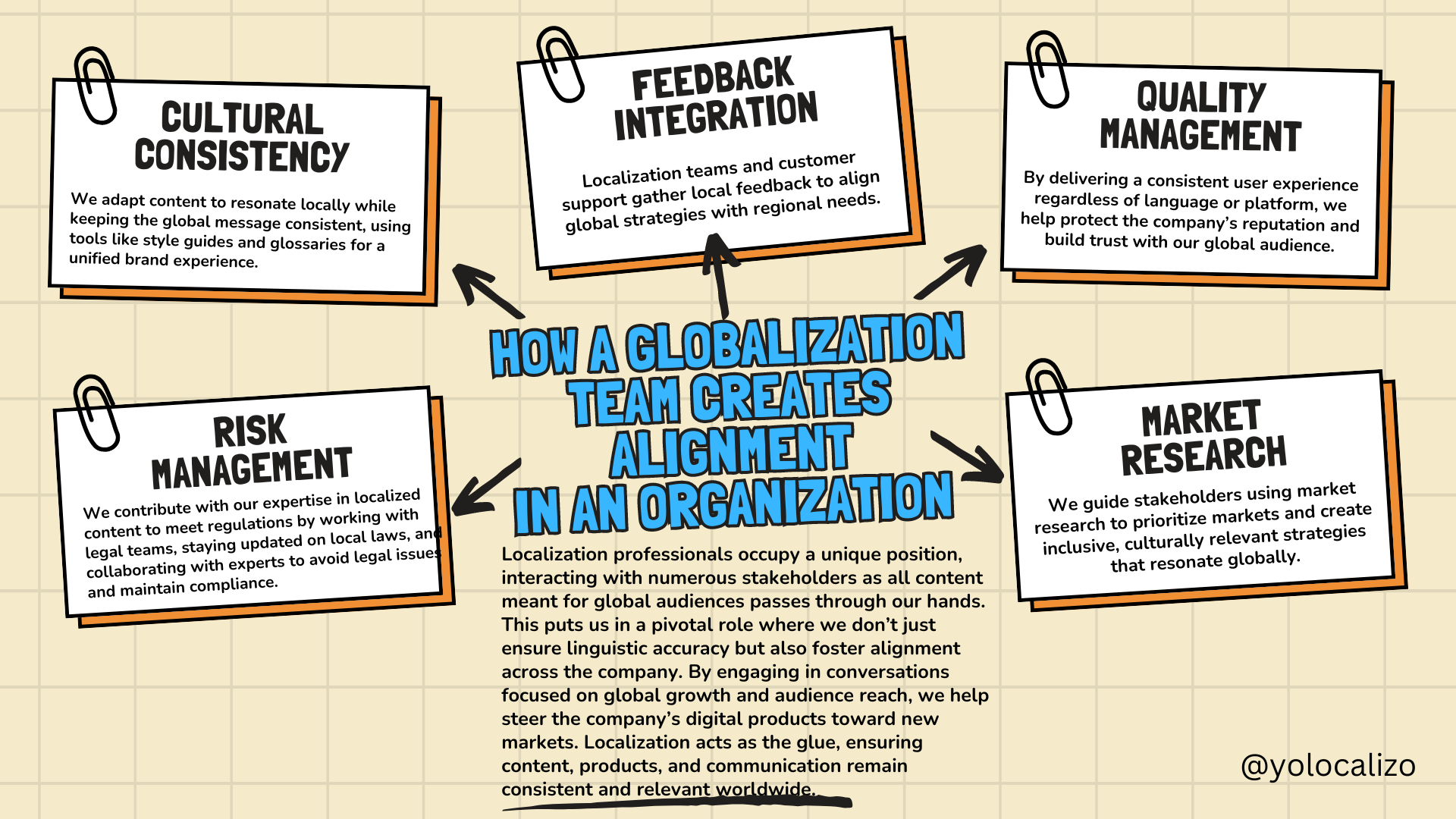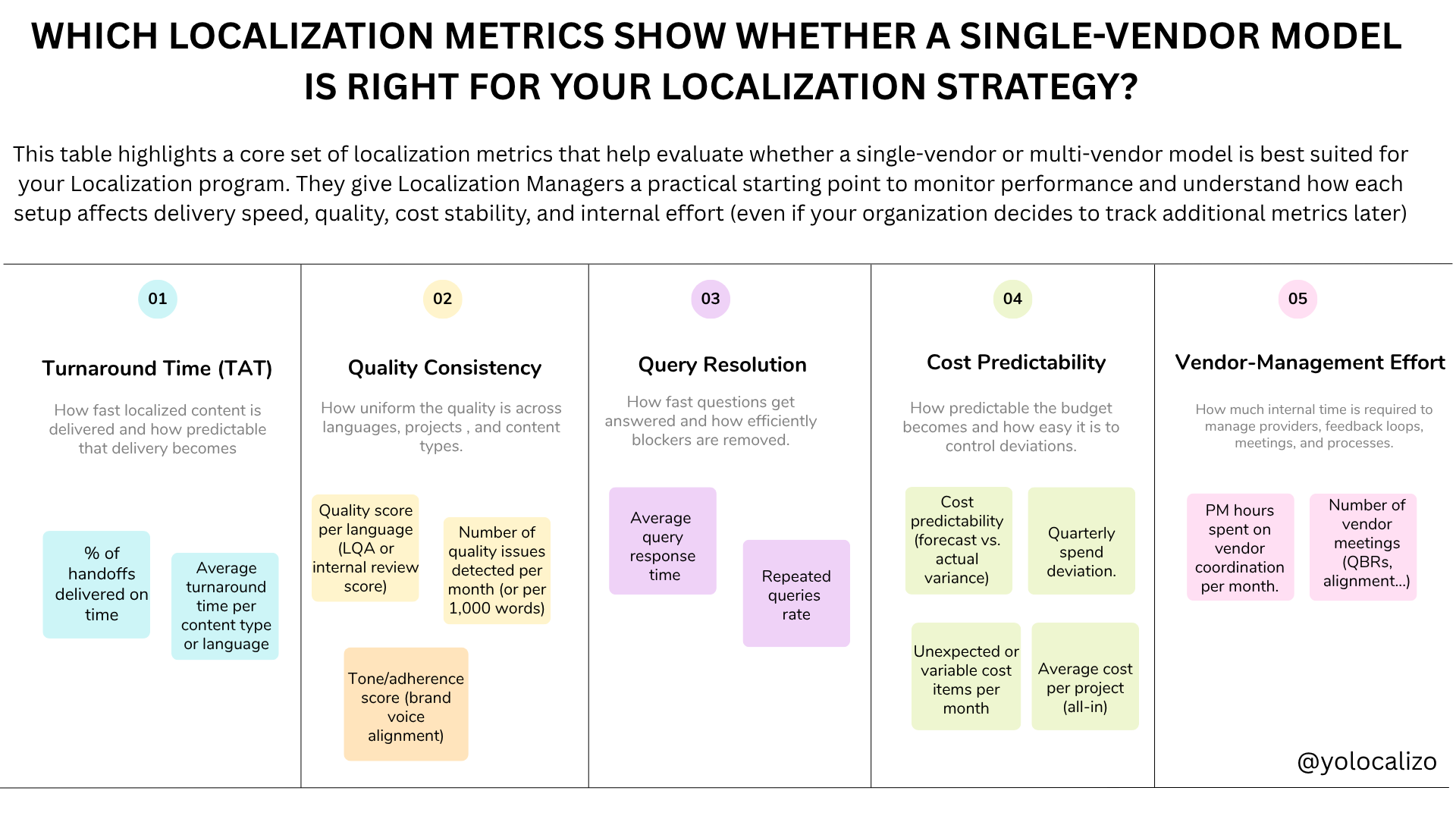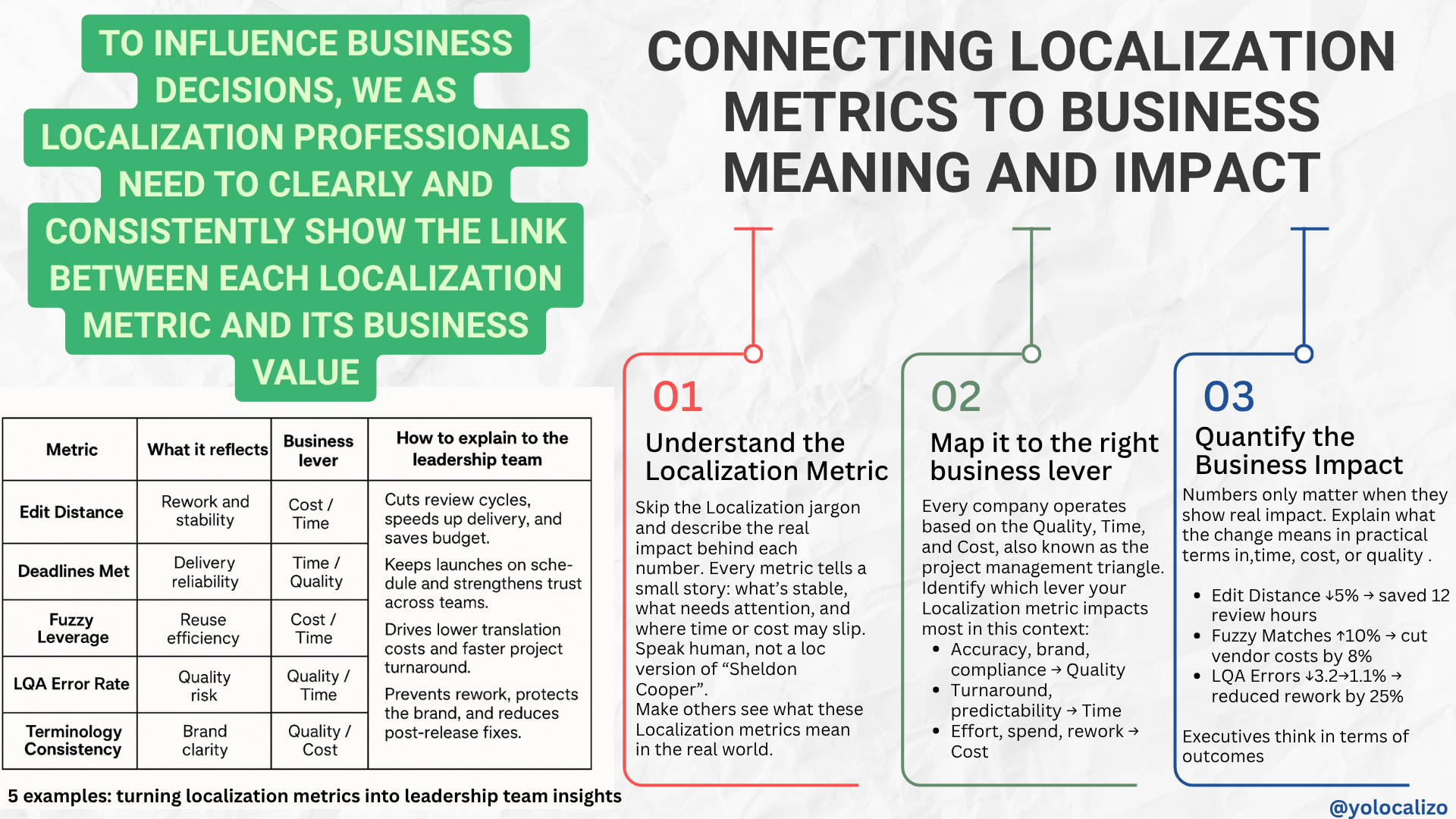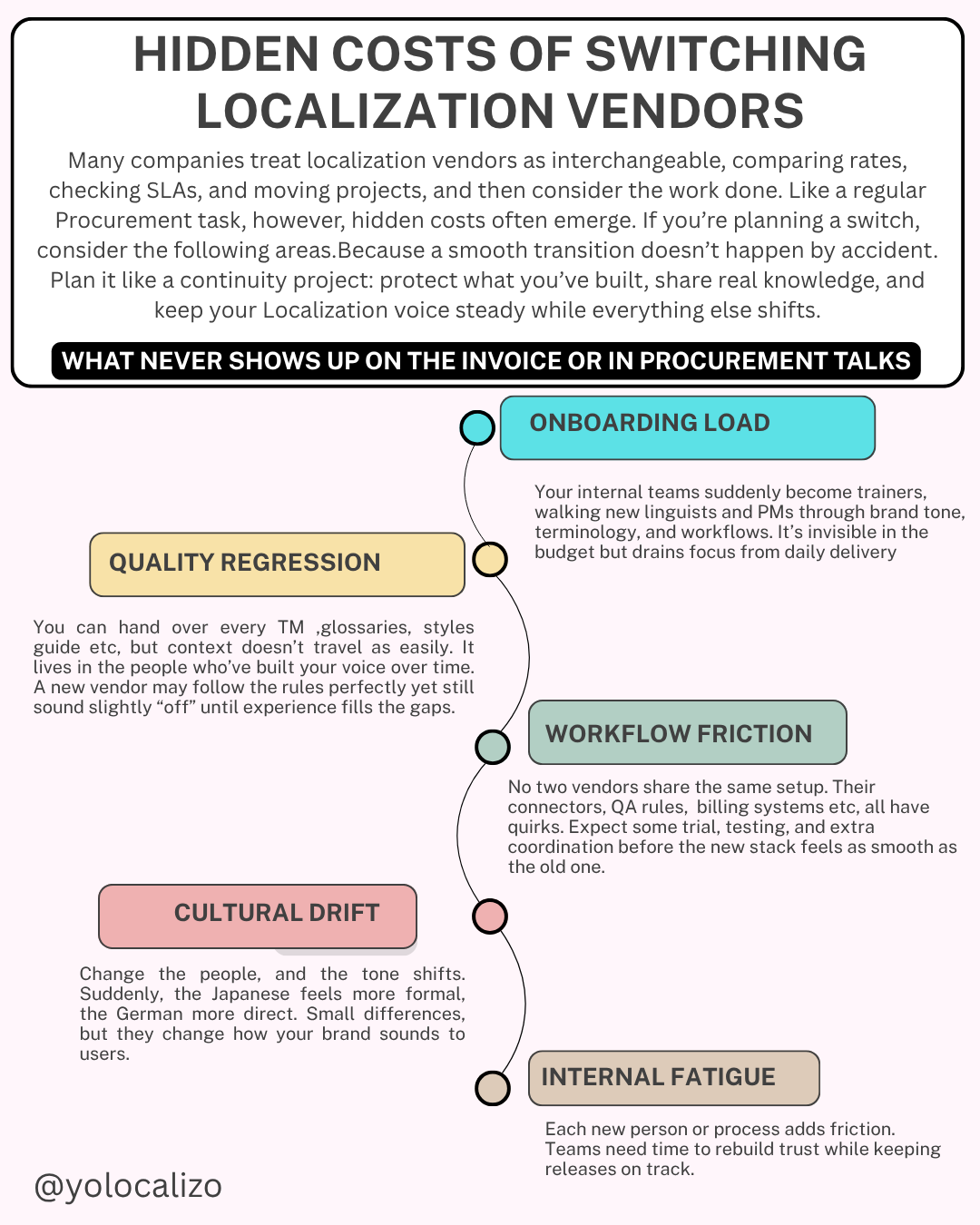Vendor switching costs in Localization, what really happens when you change providers
I still keep an eye on Lionbridge, the company where I started my localization career years ago in Dublin. It’s inevitable, I suppose, that every time I come across something Lionbridge posts on LinkedIn, I’m taken back to the 1990s, when Ireland, and Dublin in particular, was becoming the cradle of localization. Back then, companies like Microsoft, Novell, Oracle, and other significant names opened development centers there, drawn by low taxes and a great location to attract talent from all over Europe (despite the rain, though Guinness made it a bit more bearable).
Every time I come across one of their case studies, I feel that mix of nostalgia I felt when I started my localization career with them, and curiosity about how things are going over there now. Those early days taught me a great deal about how translation actually works and what truly matters to the final client.
Recently, I read a Lionbridge case study about a company that decided to consolidate more than thirty localization vendors into a single global partner.
Click HERE to access the case study
It reminded me how common vendor changes have become, and how often we underestimate the real cost behind them.
Reading that made me stop and think about what it really means to change an LSP. At first glance, it appears to be a straightforward procurement move: update the contract, reset the rate card, and carry on. But the moment you do it, everything shifts: workflows, tone, even relationships across teams. I’ve watched companies save a few cents per word, then spend months trying to rebuild the trust and rhythm they once took for granted.
That’s what I want to unpack this week: what truly happens when you change localization providers, and how to make it less painful when it’s time to evolve.
To be clear, this isn’t a critique of the case study or of the companies that choose to switch vendors. Quite the opposite these decisions are often necessary and strategically sound. What caught my attention wasn’t why they switched, but what switching actually means in practice: the human, operational, and cultural shifts that don’t always make it into the slide decks. That’s the part I find worth unpacking —because anyone who’s lived through a transition like this knows it’s never just about contracts and savings.
The illusion of “easy replacement”
Many companies assume localization vendors are interchangeable. You compare rates, check SLAs, move projects, and think you’re done.
Except you’re not.
Over time, each vendor learns your product almost as well as your own writers do. They pick up on phrasing patterns, quirks in your UX, and that instinctive tone your brand has when it’s “just right.” They also recall the subtle details, such as the feature name that never gets translated, the Spanish tagline that always sparks debate, and the reviewer who catches every extra comma.
When you replace a vendor, you lose a living memory of how your company sounds in other languages, and rebuilding that memory takes time.
The hidden costs you don’t see on the invoice
These are the things nobody lists in the RFP but everyone ends up paying for later. Over the years, I’ve noticed the same five challenges resurface repeatedly when teams switch providers. They’re rarely budgeted for, but everyone ends up paying for them one way or another. Let’s review them in the next paragrahps!
Click HERE to download the infographic
1.-Onboarding load
Your internal teams suddenly become trainers. They spend hours walking new linguists and project managers through brand tone, terminology patterns, and workflow logic. That time doesn’t appear in the budget, but it drains attention from day-to-day delivery.
2.-Quality regression
Even with TMs and termbases transferred, subtle meaning often slips away. In many cases, context lives in people, not files. The new vendor might hit all terminology marks but miss the rhythm or personality your users recognize. The first few releases after a switch usually feel “off,” and it takes months to rebuild that consistency.
3.-Workflow friction
Tech stacks rarely line up perfectly. One provider’s connectors behave differently, another’s QA rules flag issues your old setup ignored, and even invoice calculations follow their own logic. Getting everything to work together again takes testing, patience (and a few deep breaths)
4.-Cultural drift
When the people behind your copy change, the sound of your product changes too. One day, the Japanese seem a bit more polite, the Germans a bit sharper than usual. It’s subtle, the kind of thing users don’t always name, but it’s enough to shift how your brand feels on screen.
5.-Internal fatigue
New project managers, new dashboards, new escalation paths. Every change adds friction. Your internal stakeholders need to rebuild trust and establish a rhythm while keeping release cycles running smoothly.
Why companies still switch
Sometimes you have to because quality dips for different reasons, or contracts expire, or your toolset evolves, or the leadership team decides to consolidate under a global agreement.
Change can be healthy; it can introduce innovation, automation, and new cultural insights.
The real challenge isn’t change itself, but rather underestimating everything that holds the relationship together.
How to prepare before you move
If you need to change vendors, treat it as a continuity project, not just a procurement event.
1. Audit your assets, not just your rates
Map everything that carries linguistic or workflow value: termbases, TMs, connectors, scripts, review notes, escalation rules, and even past QA data. This is your localization work. Protect it.
2. Transfer knowledge, not just files
A handoff of the archive isn’t enough. Document the reasoning behind key decisions, examples of tone, and naming conventions. Knowledge transfer means context.
3. Overlap periods save sanity
If possible, let both vendors run side by side for a short period; 60 to 90 days is usually sufficient. During that time, have the new team shadow live projects, compare output, and learn the particularities of your workflow before taking full control. The overlap adds a bit of cost up front, but it buys peace of mind and smoother releases later.
4. Define what success looks like
Before you begin, ensure everyone is aligned on how progress will be measured. Talk about turnaround times, QA scores, developer satisfaction, and feedback from regional teams, whatever actually matters to your stakeholders. Then make sure someone tracks those signals from day one, so you can see improvement instead of guessing it.
5. Assign a continuity owner
Appoint one person to protect the product’s voice during the transition. They’ll connect the old and new teams, answer the “why” questions behind decisions, and spot early signs of drift. Think of them as your voice guardian; their goal is to keep stability while everything else shifts.
In conclusion
Looking back, I’ve realized localization runs on people more than on words. A vendor change means showing a new team how your product feels, how your users connect, and what makes your brand credible in another language. The best transitions I’ve seen weren’t measured in cost savings but in how quickly people started trusting each other again
@yolocalizo












AI isn’t just changing tools, it’s changing expectations
Three years into working with AI in localization, I’ve seen the pressure build: automate faster, scale more, do it now.
But the real challenge isn’t the tech itself. It’s the gap between hype and reality , and what happens when teams are expected to act like everything’s already working.
In this post, I break down five common challenges that keep showing up, and what we can actually do about them.